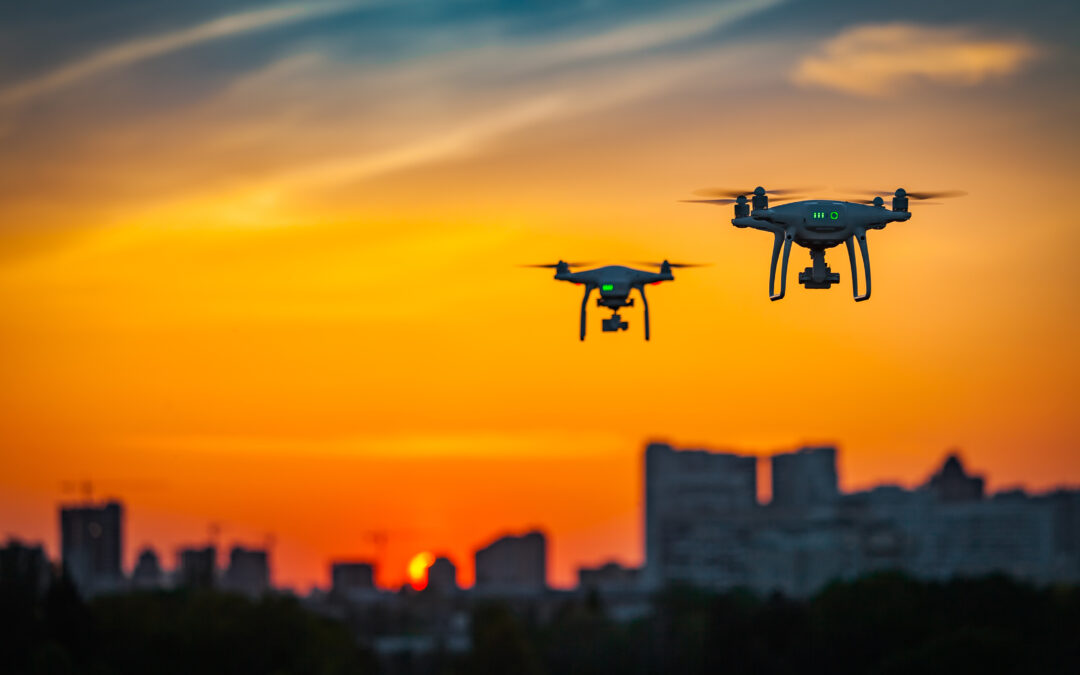Image: Shutterstock
Blog Editor’s Note: NASA’s announcement says it all (emphasis below is ours) . You should attend.

NASA Aeronautics Research Institute (NARI) Position, Navigation, and Timing (PNT) Workshop
May 24-25, 2022
Venue: This Event Is Being Held Virtually Due to Covid Restrictions: via Microsoft Teams and using the Mural Collaboration Tool
Focus: Terrestrial Complementary position, navigation, and timing (CPNT) needed to support “the first/last 500 ft” and low altitude UAS/AAM use (NOT focused on En-route navigation at high altitude, Orbital PNT, or Deep Space PNT). The Workshop will specifically focus on two sample use cases:
1) Low altitude @10-mile range multirotor logistics (cargo, wildfire, surveillance) below 1000 ft
2) Low altitude < 100-mile fixed wing logistics (cargo, infrastructure, surveillance) below 1000 ft.
Need : New operations such as UAS and Advanced Air Mobility (AAM) concepts, e.g., electric Vertical Take-off and Landing (eVTOL), will need both PNT services that provide the required accuracy, availability, integrity, continuity, and coverage performance to support varying and challenging operations and environments. With the knowledge that PNT services provided by Global Positioning System (GPS)/ Global Navigation Satellite Systems (GNSS)-based systems are subject to interference (both jamming and spoofing), CPNT solution performance metrics will need to be identified and developed to ensure the safety, security, and operational benefit of highly automated flight at high density vertiports. While GPS/GNSS are ubiquitous to aviation, Performance-Based Navigation (PBN) strategies include the need for resilient PNT services in addition to communications, surveillance, and automation services. For the proposed UAS and AAM operations, use of GNSS as the sole or primary source of PNT services presents a growing concern due to:
- Known and emerging GNSS vulnerabilities (disruption/jamming and manipulation/ spoofing)
- Weak signals and/or unavailable or unusable signals (e.g., masking, regional outages, multi-path signal errors, etc.)
- Increasing demand, competition, and use of limited and highly valuable spectrum
- Other issues
The FAA’s PBN strategy recognizes the need for resilient alternative PNT sources to provide air navigation services for en-route, terminal, and approach and landing procedures. For UAS/UTN\M operations, issues are exacerbated because of their lower operational altitudes and the areas around structures in urban areas where they need to ensure resilient PNT services that meet all “quality of performance” requirements . It is also in these currently “underserved” operational environments where potential GPS/GNSS disruptions may be most prevalent – both intentional and unintentional .
The Workshop will explore the PNT challenges, the availability of solutions that can provide to some degree the required PNT services, and the PNT performance and services that are still needed to support these emerging operations. The Workshop will also address recent government actions to strengthen national resilience through responsible use of PNT services, as described in the Space Policy Directive 7 (SPD-7) ( https://www.spacefoundation.org/space_brief/space-policy-directives/ ) and Executive Order 13905 ( https://www.federalregister.gov/documents/2020/02/18/2020-03337/strengthening-national-resilience-through-responsible-use-of-positioning-navigation-and-timing ).
Intent/Outcomes : The PNT Workshop will provide a forum for the open exchange of ideas and information regarding the emerging needs for and delivery of Resilient PNT. It will also address the data sharing needed to enable new, robust, and resilient operational capabilities – particularly for under-served areas of our airspace system. The two-day NARI symposium is expected to accomplish the following objectives and outcomes:
- In-depth exploration of the two specific use cases that will help focus on the xTM PNT sources and service gaps (both technological and geographical), separate from existing ATM services;
- Identify desired capabilities and CPNT technologies that can enable these capabilities and intended functions (i.e., autoland for non-121 ops) in the specified operational domains and environments.
- Identify the maturity of existing and emerging PNT technologies and their capabilities, and limitations, including:o Open Architecture, All Source PNTo Advanced PNT Sensors (High Performance, Low SWAP, or Low Cost)
o Advanced Timing and Timing Transfer Technology
o PNT Technology Transition Programs for various Applications
- Identify trends in PNT function, accuracy, availability, integrity, continuity, coverage, and operational reliability and resiliency;
- Identify gaps in existing capabilities/technologies/understandings and discuss opportunities in capability/technology research, development, and maturation;
- Highlight emerging capabilities, alternate PNT sources, and new PNT technology; and
- Initiate the establishment of performance requirements required to support UASUTM operations (avoiding company-specific promotion).
- Development of a framework that will help move towards answering the questions raised and determining the means of achieving the resilient PNT services required.
Agenda: Click here
Who Should attend?
- PNT technology developers, researchers, and service providers
- Aircraft OEMs with underserved and defined PNT requirements
- New entrants whose operating concepts require new PNT services and infrastructure
- Representatives from Standards bodies
- Vertiport, eVTOL, UAS developers
- Technology start-ups developing alternative PNT solutions
- Established avionics and GPS navigation equipment manufacturers
- PNT Subject Matter Experts
- Researchers interested in analyzing performance requirements for various use cases and operations; and
- Regulators and other government stakeholders, including Aircraft Certification and Flight Standards professionals
Format:
- A Plenary session to discuss PNT issues, concerns, and maturity and help chart the course for the Workshop
- Virtual breakout sessions to focus on aspects of PNTo Vulnerabilitieso Emerging Technology
o In Depth dissection and discussion of selected use cases from a P, N, and T perspective
Looking to the Future:
- The establishment of a regularly scheduled PNT working group to feed Standards Development Organization, drive R&D partnerships, and advance the state of the art for reliable alternate PNT resources.
- Follow up Workshops that will focus on non-PNT aspects that challenge safe, secure, and economically viable UAS/UTM operations.


